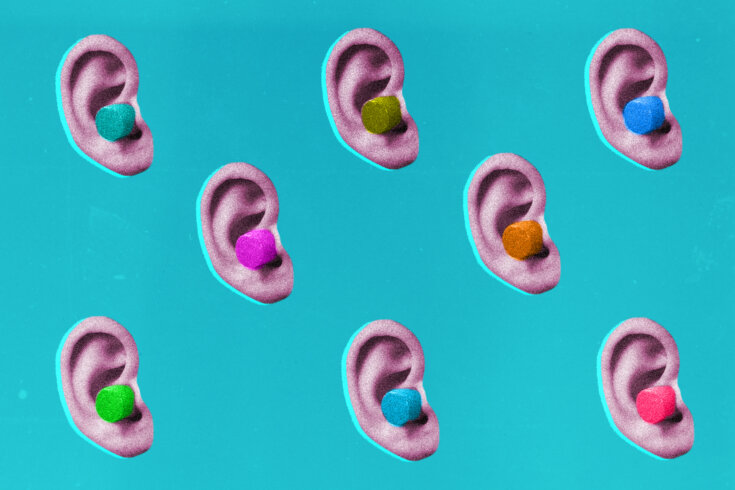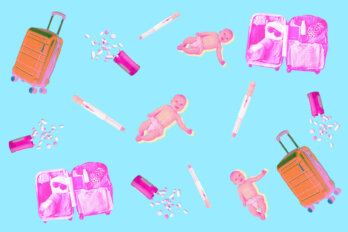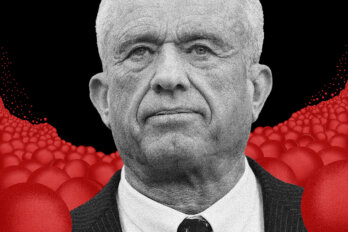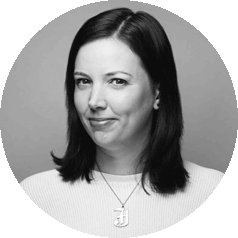This article contains discussions of suicide. If you or someone you know is having a suicide crisis, please call Talk Suicide Canada (1-833-456-4566). There is also the Hope for Wellness Helpline for Indigenous people across Canada (1-855-242-3310).
Twenty-seven years ago, I stood on top of the music building at Indiana University, considering a jump. As a teenager in the ’90s, I had played a lot of music—some jazz saxophone and the drums. But my main instrument was the clarinet: I competed as a woodwind soloist in Canada’s National Music Festival and was told by famous clarinetist James Campbell that I could be one of the best players in the world. One evening along the way, after a jam session on the drums in my basement, I heard a ringing in my ears. I learned the word tinnitus.
It was both the unbearable ringing and the heartbreak of losing my music career that brought me to the roof of the university building two years after my diagnosis. And while I didn’t jump that day, my life as a promising musician ended at sixteen. I began on a long journey to learning how to deal with the pain, ultimately trying methods ranging from biofeedback to hallucinogenic drugs. I was also told by doctors that I should wear earplugs—when I played or at loud parties—to protect my ears.
In research first published in 2015, the World Health Organization estimated more than 1 billion teens and young people are at risk of hearing loss due to unsafe listening practices. (Other studies have shown a relationship between living with tinnitus and suicidal ideation. Studies have also shown that hearing loss correlates with dementia later in life.) In my case, I didn’t wear earplugs consistently enough. Even after I knew all the facts, I felt embarrassed to be using them. I thought wearing earplugs showed the world something was wrong with my ears—which was difficult for me to accept as a musician who’d once had world-class potential.
I am far from the only person to have hesitated to wear earplugs. New Yorker staff writer David Owen covered aspects of the stigma in his 2019 book Volume Control, as did University of Calgary associate professor Marcia Jenneth Epstein in her 2020 book Sound and Noise. For many years, as one person in the earplug industry put it, young people felt earplugs looked dorky.
In 2022, Dave Grohl of Foo Fighters admitted to having tinnitus and hearing loss but said he refused to wear hearing protection. He joked that he didn’t like the way it looked. Grohl, who was fifty-three at the time, was referring to in-ear monitors. In-ears can function like earplugs in the way that they reduce sound levels. Though they are not perfect—older models can disrupt spatial awareness, and many musicians set them too high—they are an important piece of professional gear, like hockey players’ helmets.
But that same year, the WHO published guidelines strongly encouraging earplugs in loud environments. By that time, GQ reported on a custom earplug trend in New York City and suggested “the hottest thing to wear to the club is a pair of earplugs.” Also in 2022, Loop, a company that sells fashionable earplugs, was named the fastest growing tech company in Belgium by Deloitte. These aren’t the orange squishy pairs you’re used to seeing at the drugstore: Loop’s offerings are designed to make a statement, and they come in bold colours and patterns. As an early yet resistant adopter, I was puzzled by all of this. Had earplugs become . . . cool?
The kinds of earplugs available to me in the ’90s weren’t very advanced. They didn’t work well for playing the clarinet: they affected my perception of my own sound too much. For the drums, I used foam earplugs, often covered with shooting earmuffs. And for the saxophone, I ordered a pair of non-custom musicians’ earplugs from a company outside Chicago, called Etymotic Research. Unfortunately, they stuck out of my ears with a bland beige knob, looking like a medical device.
At some point, I stopped caring about looking uncool with earplugs. I grew up and learned to ignore whatever people might be thinking about the ugly things sticking from my ears. I also stopped identifying as a musician. Then, about ten years ago, while looking for a gift for me, my wife came across a Washington, DC–based company called EarPeace.
EarPeace used high-fidelity filters like Etymotic did but put them in a discreet design, making them largely unnoticeable. They also updated the messaging and marketing around earplugs, appealing to concertgoers and music festival attendees, not just musicians. They partnered with venues like the iconic 9:30 Club in DC and produced custom-branded earplug cases for DJs like the legendary Carl Cox. Their focus wasn’t just on promoting safe listening but on selling a hip product to people in the know.
In the mid 2010s, other new earplugs became available. Minneapolis-based Vibes appeared on Shark Tank with discreet, high-fidelity earplugs, and Los Angeles–based Eargasm launched its own version. A few companies also began to challenge the assumption at the time that the best way around the stigma was invisibility. New York City–based Earos debuted a visible aesthetic. And in Europe, which had other companies making discreet earplugs, Loop developed a design that proved perfect for social media.
During the pandemic, live music collapsed. Around the world, concerts and festivals were cancelled or postponed—at first, for months, then years. But despite the lack of concertgoers’ opportunities to use earplugs (and the lack of ability to market to them in person), Loop noticed it still had some sales coming in.
The company had already been marketing earplugs as something that could help concertgoers party longer and hear the music better, rather than promoting the health benefits of protecting their ears. But this was similar to other high-fidelity earplug companies promising a superior listening experience for music. The company realized during and after lockdown that people were buying earplugs to control the noise around them—to get better sleep or to find some quiet in open-concept offices. Loop also realized its users included often-overlooked segments, like the neurodivergent community and parents, and they pivoted to showcasing earplugs as a lifestyle product. They switched their motto to “Your Life, Your Volume” and started investing heavily in influencer marketing.
Loop’s earplugs, which look like jewellery, had something that many other hip high-fidelity earplug companies didn’t: visibility. With young models and good lighting, they looked cool on Instagram. Loop’s sales went from about $1.45 million in 2020 to $175 million in 2023, when they sold over 3 million pairs in a single year, according to e-commerce data site Revend. Increased awareness of wellness and a strong desire to get back out in public safely after the pandemic also seem to have contributed to this dramatic shift in people buying earplugs.
Some people had already begun using them while working from home with noisy roommates and family nearby. For others, like thirty-year-old Laura How, earplugs can help with overstimulation in an urban environment like Toronto. How was diagnosed in her twenties as being on the neurodevelopmental disorder spectrum. She’s worn her Loops at movie theatres, on the subway, and at her previous job at a museum with a loud installation. Attention-deficit hyperactivity disorder and some anxiety disorders are often characterized by a feeling of sensory overload, and many people who live with these conditions prefer to block out distracting noises.
Prominent musicians have also been working to get the message out that hearing protection is cool. In 2022, Jay Weinberg, formerly of Slipknot, worked with New York City–based Hearing Health Foundation to appeal to younger people. Weinberg, who is thirty-four and the son of Bruce Springsteen’s drummer Max Weinberg, has seen how the older generation has struggled with their hearing. Even so, Weinberg told me that he isn’t a perfect example of someone who is doing all the right things for his hearing: he plays in a loud genre and goes to a lot of shows to listen to loud bands. It is hard to focus on the long term when music is such a visceral, immediate experience. He wore earplugs occasionally as a teenager, but he has used the same pair of custom-moulded ones for the past ten years and keeps them on him for events like National Hockey League games. “To have a life in rock and roll, you need to do it intelligently,” he said. “And certainly one huge facet of that is protecting your ears.”
Another big shift has come from young people wanting to protect themselves. In 2023, many Taylor Swift fans posted videos recommending that others bring earplugs to the Eras Tour. The volume level of the music of a tour that size can damage hearing. They also noted that the sound of other fans screaming can be deafening.
And when I spoke to two Toronto-based ravers, Yikern Looi and Christine Ly, both said that earplugs are necessary for dance parties. I asked them for a good club to visit if I wanted to see people wearing earplugs. They suggested Coda and Nomad in Toronto—not everyone wears earplugs, but they do see more and more of them. Coda is closer to where I live in the city, so I looked up who was playing. As I listened to a few tracks, I realized it had been a while since I’d been in a club and I didn’t know what to wear. I wondered if I needed to put on something nice or if I could just stop by in jeans after helping get my kids to bed.
I searched for the Coda dress code online—which brought me to their FAQ section. It encouraged style and personal expression and also told people to come as they are. But as I scanned the rest of the page, I noticed something a few paragraphs below the dress code that was even more relevant. Under an all-caps subheading that read “PROTECT YOUR EARS” was a statement encouraging customers to wear earplugs. I wish the cool kids were recommending earplugs when I was young: my loss of music is still raw. After all these years, I still wake up from dreams where I’ve just been on stage making the most beautiful sounds.





